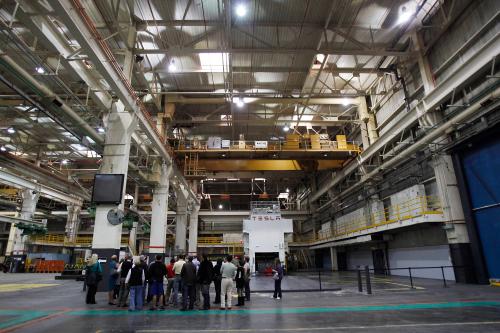As the so-called “gig economy” of app-based freelancing spreads, some cities stand out as early adopters—quick to embrace the new model—while others are fast followers and still others are slower to adopt the new platforms. Such variations are visible in our data examining “rides and rooms” industries like Uber and Airbnb.
And yet, for all cities and the nation as a whole, it is important to ask, what does the gig economy mean for settled ways of organizing work? And: Is freelance “gigging” through online platforms complementing or cannibalizing conventional payroll employment?
About the latter question, the evidence from our research is as yet ambiguous, but there is enough to suggest that payroll work is being challenged, and that policymakers need to think hard about ensuring that non-traditional work arrangements work well for all workers.
The cases of Uber and Lyft as well as Airbnb are compelling because they epitomize a broader ongoing shift towards non-traditional, more “contingent” or “independent” non-payroll work, including that of freelance or contract workers filing themselves as “nonemployer” firms and securing gigs through the use of online matching platforms. Along those lines, our analysis tracking the growth of online freelancing in those industries alongside that of more conventional payroll employment allows for an initial look at how the traditional staffing model and the crowd-based model are interacting.
What does this look reveal? At first blush, the national and to an extent the city-by-city data suggest that platform-based freelancing is complementing and not displacing payroll employment, at least in the rides and rooms industries.
Nationally, payroll employment in these sectors has increased overall, despite the surge in nonemployer contractors working for the platform companies. Altogether, payroll employment in the ground-transportation or “rides” industry grew by 17 percent between 2010 and 2014 and by 7 percent in the accommodations industry. These trends contradict the widely held belief that platform-based freelancing immediately displaces existing payroll employment. In these four years of economic recovery at least, payroll work and gigging seem to have coexisted.

Our city-by-city data also suggest coexistence—at least initially. Though platform-based gigging has been growing at double-digit rates in almost all of the largest 50 metropolitan areas, traditional payroll employment also rose in 35 of the 50 metros in the rides industry and in 40 metros in accommodations. On first impression, then, between 2010 and 2014 Uber, Lyft, and Airbnb were not in most places driving traditional incumbent employers to lay off payroll workers, convert to contracting, or go out of business. Instead, the “sharing” economy may have been serving unmet consumer demand or stimulating new demand—and so creating new work opportunities complementing those in existing taxi or hotel companies. That impression gives credence to the argument that platforms like Uber and Airbnb create new matches of workers and consumption that enable new economic activity.
However, a closer look at the metro-by-metro data is more disquieting. Even though they report on the platforms’ early days, the 2012–2014 data raise the possibility that the rise of platform freelancing has already begun to substitute for payroll employment and cannibalize it.
By 2014 payroll employment had already declined in 15 metros in rides and 10 in rooms. Especially on the rides side, where Uber and Lyft offer marked quality advantages over many incumbent cab companies, payroll employment growth in incumbent firms remained anemic in most markets or else turned negative while platform-based freelancing (measured by nonemployer firms) took off.

In San Jose nonemployer firm gig employment spiked 145 percent but payroll employment slumped 31 percent as taxi and limo companies shed 250 payroll jobs. In Sacramento gig employment spiked 92 percent while payroll employment declined 22 percent. And in Pittsburgh freelancing surged 85 percent (by 560 drivers) while payroll employment slumped 5 percent. Moreover, many of the payroll declines appear to have occurred in Main Street-type metros like Buffalo, Louisville, and Virginia Beach with relatively more recent platform launches, suggesting that the local taxi or hotel incumbents are proving more susceptible to business losses than those in coastal early-adopter metros, which perhaps have greater momentum given broader-based economic growth.
To be sure, no statistically robust pattern exists as yet in the metro numbers to link gig growth firmly to payroll decline. However, the early numbers from our research suggest such a relationship in some places and more generally raise the possibility that the online freelance marketplaces may well cannibalize competing payroll businesses in some industries, particularly where incumbents are struggling in weaker markets or fail to respond with better service. Moreover, in many cities the incumbent cab companies are increasingly adopting the “Uber” model by themselves employing independent contractors, as the UCLA economist Sanford Jacoby mentioned in a recent e-mail. In that way, the rides industry may well represent on ongoing case study of how the employment shifts over.
All of which speaks to the need to consider the social and safety net implications of the ongoing shift to platform-based independent work. To be sure, the gig economy is delivering important economic benefits to workers, firms, regions, and the nation. Given their power, these models have the potential to deliver significant social benefits by increasing labor force participation, providing worker flexibility, stimulating demand, and increasing productivity across the economy in the coming years. Gigging may also provide a way into the workforce for the hard-to-employ.
However, the rise of app-based gigging has huge implications for the circumstances of workers and families.
To begin with, the scale of the trend is enormous. After all, the spread of new, gig-based business models for linking workers to work isn’t just a limited-scale, vanguard development. Instead, the changes affecting a few hundred thousand workers in the rides and rooms industries are only a tiny part of a pervasive, economy-wide move toward non-traditional freelance, contract, and temporary work arrangements in dozens of industries. And the number of workers involved is huge. Overall, there may be as many as 68 million “independent” workers in the United States, according to a new estimate by the McKinsey Global Institute. Within a decade nearly half of all employed Americans may be engaged in the labor market in this way. So the size of the trend alone underscores the need to pay attention.
Beyond that, the shift to alternative work arrangements matters for policymakers because it represents a fundamental reorientation of the social contract within which millions of Americans work. The rise of online temping, freelancing, and independent contracting means that millions of workers increasingly lack access to the once-ubiquitous labor standards that defined the “good jobs” economy that came out of the New Deal era. Gig workers, for example, retain limited access to income-security protections such as unemployment insurance, workers’ compensation, and disability payments. Minimum wage and antidiscrimination laws may not apply to such contractors, and their attachment to the Social Security system is weaker. Beyond that, access to credit, training, and credentialing becomes more tenuous than for workers elsewhere in the economy.
In short, the expansion of the gig economy—left to itself—is likely going to further reduce the share of American workers that can achieve basic economic security through their work.
Given that, the question becomes not just whether the gig economy will supplant large portions of the payroll economy but: How can the technological and business-model innovation of the gig economy be managed and enhanced to ensure it delivers a measure of economic security to the millions of Americans who are beginning to depend on it for their livelihoods? This question is going to become an urgent one in during the coming Trump administration. I will look at some possible answers to it in a forthcoming post.
No ”gig economy” firms—whether Uber, Lyft, or Airbnb—support Brookings Metro research.
The Brookings Institution is committed to quality, independence, and impact.
We are supported by a diverse array of funders. In line with our values and policies, each Brookings publication represents the sole views of its author(s).







Commentary
The gig economy: Complement or cannibal?
November 17, 2016